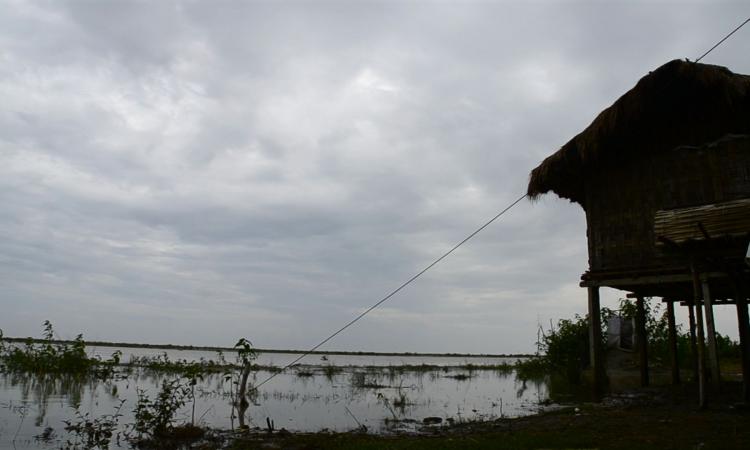
The Brahmaputra, one of the mightiest rivers in the world, has many stories to tell as it journeys from Tibet through India and finally finds its way to the Bay of Bengal. Sadly, many of these tales are not happy. Known for its disastrous flooding, the monsoon season is play time for the river. The 2900 km long river swallows huge chunks of land as it meanders along, withering scores of lesser mortals.
Majuli, a large river island, is one of the worst affected. Originally 1250 sq km in size, the island has been reduced to approximately 421 sq km. It has a population of around 150,000. Around 67 revenue villages have fallen off into the river due to massive erosion and surveys indicate that in the next 15-20 years, Majuli may disappear completely.
“It used to take us one day to get to where our village Kanajan originally was 12 years ago, from where I stand now. The river expanded and ate our land and that of many other villages. It kept chasing us year after year and now here we are on this embankment”, lamented Dhrubajyoti Payeng, an embankment dweller near Bengeniati area in Majuli. Bereft of any other livelihood options, many take to daily wage labour.
Majuli is revered as a seat of Assamese culture and a hub of Neo Vaishnavism. Lord Krishna is believed to have played here with his friends. In the 16th century, Srimanta Sankardev, a social reformer preached a monotheist form of Hinduism known as Vaishnavism and established monasteries in Majuli to spread the message. Since then, Satras have played a significant role in upholding the heritage of Assamese culture. Several of these Satras have left the island in recent times due to excessive erosion, while many others have had to shift places within the island.
The Government has made several efforts to arrest erosion, many of these being structural measures such as embankments, installing geo-bags, porcupines and so on but not much has changed. Many of these, especially embankments, have actually aided erosion instead of controlling it, say the locals. “If you don’t let the river flow, it will find its way somehow”, commented Jamini Payeng, National Award Winner (Craft Council of India) handicraft artist and activist in Majuli who supports families affected by erosion, especially women, by training them in weaving and tailoring.
Every year, the river swells and eats away large portions of land from this island, and people continue to put together their lives over and over again.
Watch the video to know more about Majuli and how the lives of the people flows with the river.
/articles/my-disappearing-land-majuli